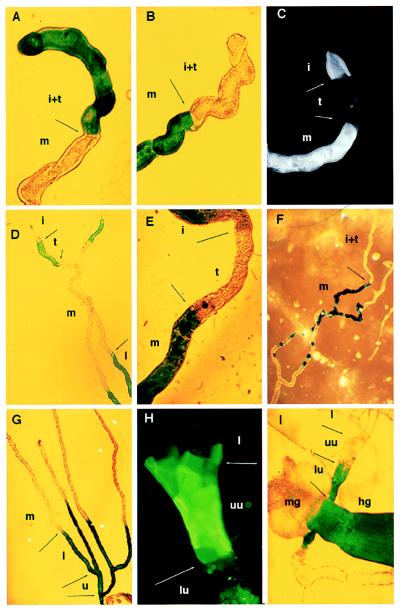Figure 2.
Genetic mapping of tubule subregions. (A) Line 155Y marks the initial and transitional segments of posterior tubules by inclusion, whereas (B) lines c709 and c776 mark them by exclusion. Line c825 shows staining of the initial and main, but not transitional, segments in posterior (C) and anterior (E) tubules. (D) In contrast, line c507 marks the transitional segment and lower tubule, but not the initial or main segments (anterior tubule). (F) Line c374 marks the main segment. In this line, the boundary with the transitional segment is clear, but the transition to lower tubule is gradual (see Fig. 3). (G) Line c507 marks the lower tubule and ureter. (H) Line c649 marks an “upper ureter” domain from the tubule bifurcation to halfway along the ureter (anti-β-galactosidase fluorescence). (I) Line c601 marks the complementary lower ureter and hindgut. The diameter of the tubule can be taken as 35 μm throughout. i, Initial segment; t, transitional segment; m, main segment; l, lower tubule; u, ureter; uu, upper ureter; lu, lower ureter; mg, midgut; hg, hindgut.

